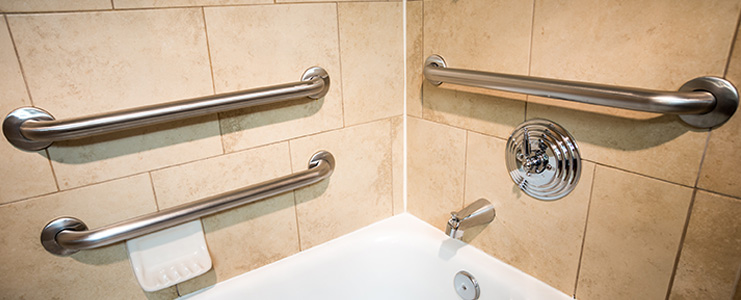Modifying the Home to Accommodate a Person with Parkinson’s Disease
July 11, 2018
Parkinson’s is an example of a progressive disease, with symptoms often arising in stages rather than all at once. As the disease progresses, life can become more difficult. Therefore, it’s important for caretakers of people with Parkinson’s disease to learn how they can adapt to the daily living processes of the person, and also modify their home to accommodate that person’s changing needs.
Here are some tips from a home care agency in San Jose, CA about how you can better adapt your home for a person with Parkinson’s disease:
- Floor surfaces:
People with Parkinson’s tend to have a harder time walking on thick floor rugs than thin carpets or wooden floors. Many people with Parkinson’s develop a sort of shuffling gait that can cause them to trip and fall if they walk on more difficult surfaces, or if there are hazards in their way. If you do have floor rugs in your home, you should either remove them entirely or tack them down. When you clean bare floors, make sure you use a type of non-skid solution or wax. - Furniture:
Place all pieces of furniture in the home far enough apart from each other to allow a wheelchair to be able to access any part of the home. Five and a half feet of separation is a good general rule, as that allows a wheelchair to perform a full 360-degree turn without hitting any objects. - Unnecessary decorative items:
Certain types of items like floor vases, statuary objects, side tables and tall lamps can be difficult for people with Parkinson’s to maneuver around. You can either remove them, if possible, or at least make sure they’re out of the way of main walkways and areas in which the person might operate their wheelchair. - Bathrooms:
Install grab bars next to all sinks, toilets, tubs and showers to help prevent slips and falls. You can also install door pulls or utility handles on doors throughout your home to make it easier for the person to get through doors. Sometimes, people with Parkinson’s find it difficult to use standard doorknobs. - Kitchen:
You should make the kitchen as accessible as possible for a person suffering from Parkinson’s. Add pieces of fabric or rope to the handles of all drawers to make them easier to pull out. Pulls on cabinets and cupboards can also be quite helpful, if they’re not already installed. Try to keep all important items between chest and waist height, whenever possible. This includes silverware, dishware and food in the refrigerator. - Bedroom:
All furniture should be stabilized, including the bedroom. Take rollers off the bedframes, or if they have locking mechanisms, make sure they’re locked in place to prevent the bed from slipping. Make sure dressers and closets are accessible for the person as well, using many of the same standards and techniques already listed.
For more information about modifying your home to accommodate a person with Parkinson’s disease, contact our home care agency in San Jose, CA.
Categorised in: Senior Home Care

